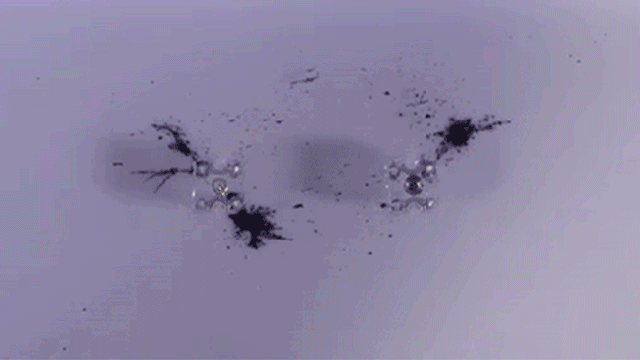From chaos, some order and energy — at least if you’re a bunch of carbon nanotubes being blasted by a Tesla coil.
A team of researchers at Rice University has demonstrated a set-up that allows them to create long, spidery wires from a random heap of carbon nanotubes by applying the force field generated by a Tesla coil. The wires can then harness energy from the electrical field created by the coil to power a circuit, too. The team calls the technique — wait for it — “Teslaphoresis”.
What you see in the gif above is a set of those wires forming around two LEDs. But there’s no power source component in the circuit: The wires are actually absorbing energy from the Tesla coil field to light up the diodes. At first the wires are barely perceptible, hence the low levels of light, but as they increase in size the LEDs brighten up. The findings are published in ACS Nano.
The field from the coil sets up quickly oscillating electrical fields in each and every nanotube. Those shifting positive and negative charges in the tubes cause them to align into long wires. The team has observed what they call a “tractor beam-like effect” too, which causes the wires to stretch over fairly long distances.
The team reckons that the technique could be used to create new kinds of self-assembling circuity in the future.
Gif from a video by Rice University
